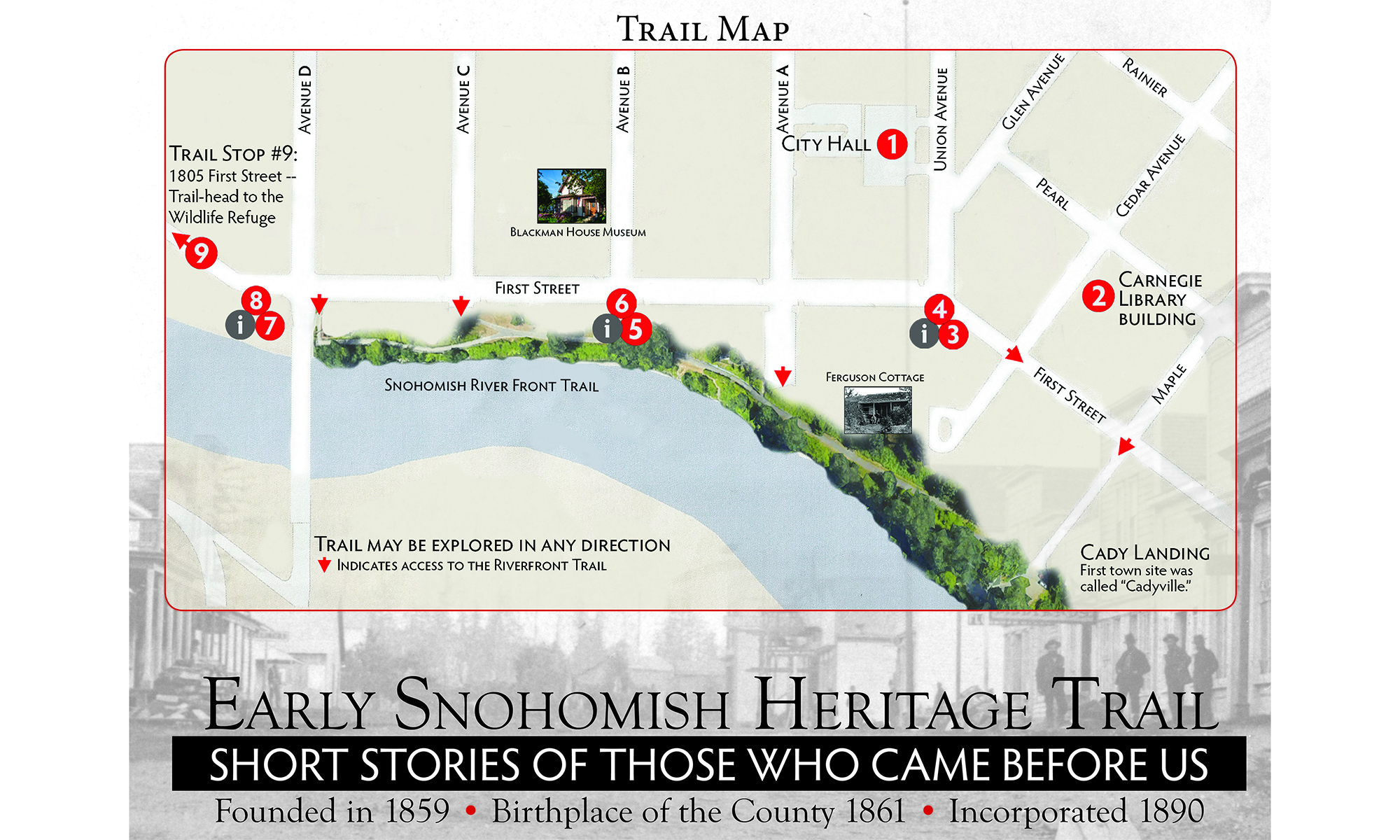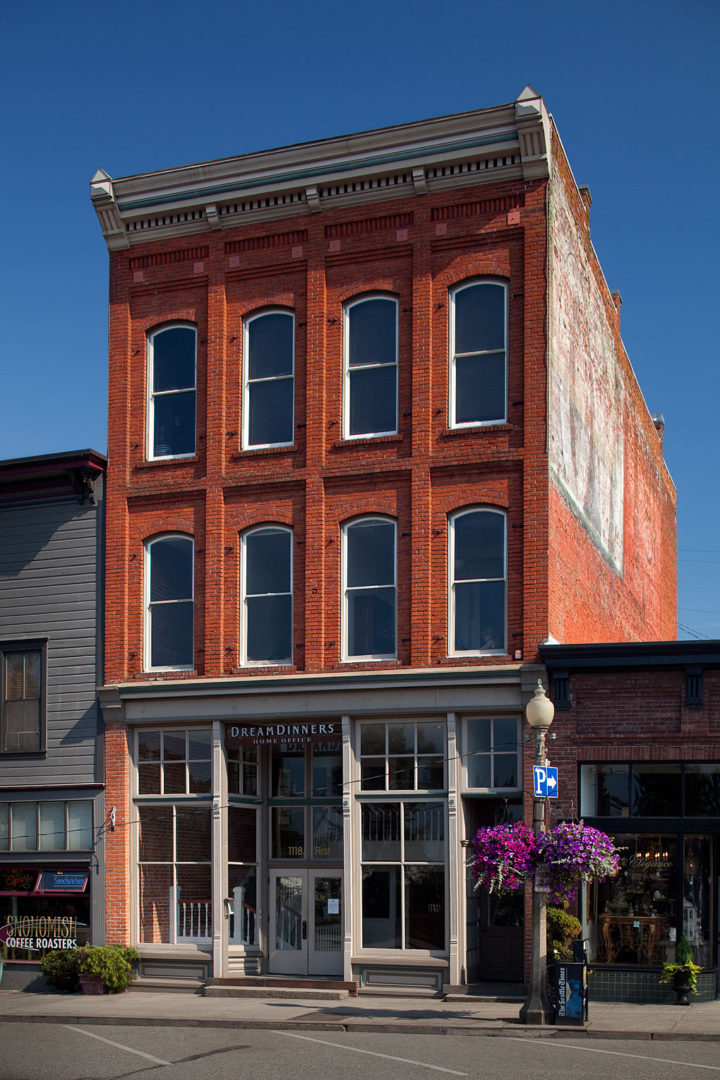Meticulously captured by photographer Otto Greule for our project documenting architect White’s surviving structures from 19th-century Snohomish, the Burns Block (1118 First Street) bears the historic name of its eccentric owner, Samuel John Burns.
“A Man Who Loves Money More than Comfort,” announced The Eye’s sub-head in a report of his paralysis in 1892. “John Burns, the long-haired old fellow, with an unkempt beard and a small dog,” the report begins, “has lived in the low wooden shack that stands in the shadow of the brick block bearing his name.”
Knowing this, you have to wonder about Burns’ relationship with his architect/contractor J. S. White … a little gossip would help my story just about now. In any event, their collaboration resulted in Snohomish’s grandest building, and a hero, as well, if a building can play that role.
It was the great Snohomish fire of 1911, when in the middle of the night, the wooden buildings on both sides of First Street, starting near Avenue B, were fully engaged in flames and smoke. On the south side of First, the fire burned the wooden buildings built on pilings until it ran out of fuel at the intersection of Avenue C.
Across the street, however, the fire’s raging westward movement was stopped by the three-story-tall Burns Block acting as a firewall.
This story was one of the favorites told on our tour with Emerson third graders this past May, judging by their thank you notes.

Thank You note from an Emerson third grader for leading a walking tour in May 2014.
The building is related to fire from another direction, as well. In 1889, the older, waterfront part of Seattle burned to the ground started by the infamous glue pot. The lesson taken from that disaster, which the Snohomish Fire Department helped fight, was that all commercial building would be built of brick. And the Burns Block is built of bricks manufactured in Snohomish!
Today, our grandest building wears its red bricks as many badges of courage, standing tall in the afternoon sun.
As for the miser Burns, who listed himself as a “capitalist” in the 1888 Polk Directory, he died at age 66. A single man, his body was returned to New Brunswick, Canada for burial in the family plot. His extensive real-estate holdings in Snohomish were divided among his six siblings.
. . . .
Published in the Snohomish County Tribune, July 16, 2014

